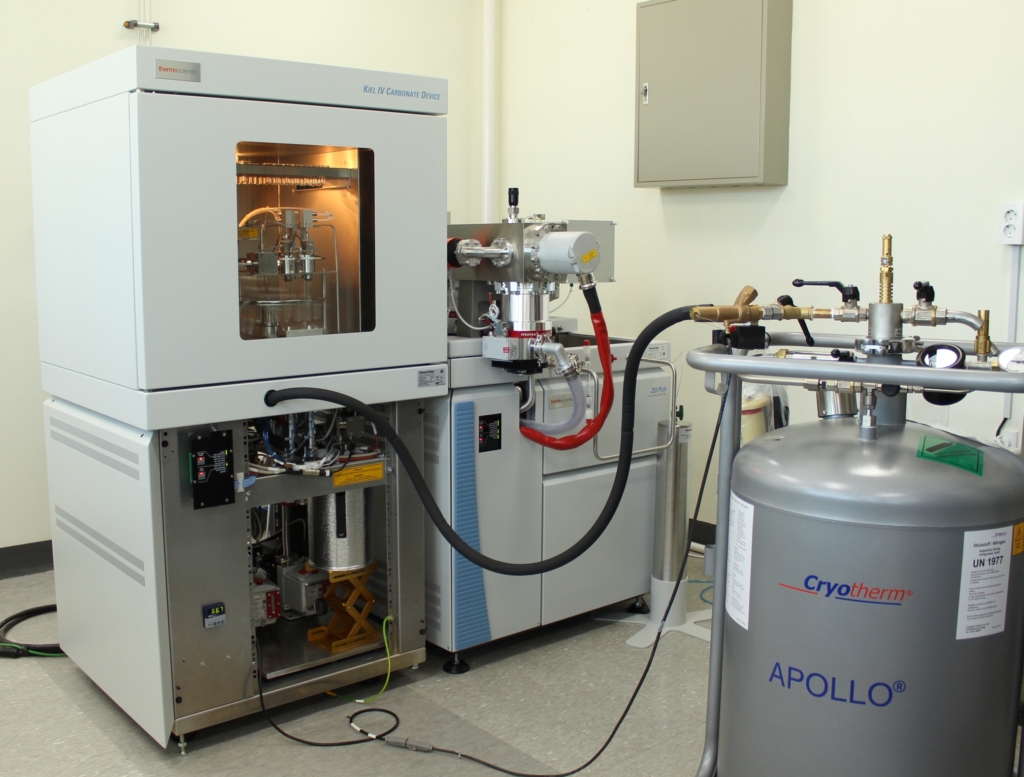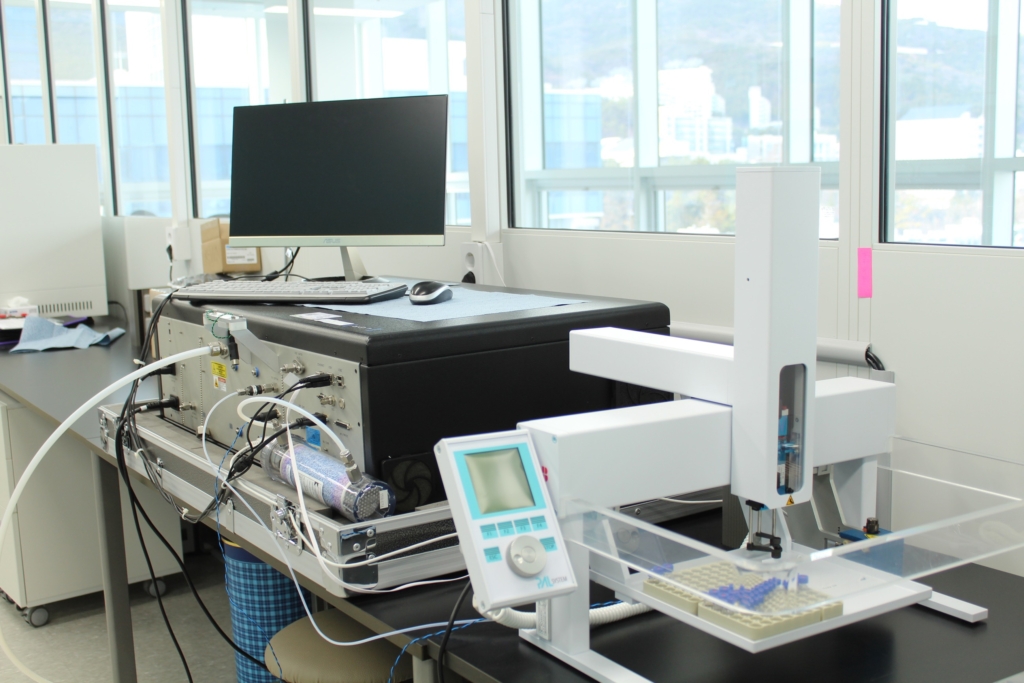The lab comprises an Isotope Ratio Mass Spectrometer (IRMS) for the stable carbon and oxygen isotope analysis of calcite samples, and a water isotope analyzer (WIA) to measure the hydrogen and oxygen isotopes of various types of water samples.


The IRMS (a Thermo Fisher Mat 253 Plus) is connected with an automated carbonate preparation device (Kiel IV), in which calcite samples from stalagmites are dissolved with phosphoric acid to create CO2 gas, which is then sucked into the mass spectrometer to determine its isotopic composition. The instrument is the first one South Korea that will also be able to measure clumped isotopes. The isotopic analysis of speleothem samples will allow the ICCP paleoclimate team to reconstruct changes in past climate conditions on the Korean Peninsula with an unprecedented resolution. Ultimately, the goal is to determine the drivers of past changes of the East Asian summer monsoon on decadal to orbital timescales.
The WIA (a Los Gatos cavity ring down laser system) is currently used to measure the isotopic ratio of oxygen and hydrogen from rainfall samples, that are collected from different sites in Korea. The data from monthly measurements of oxygen isotopes are shared with the International Atomic Energy Agency in Vienna as part of the Global Network of Isotopes in Precipitation (GNIP) program. The WIA is also used to measure the water isotopic composition of dripwater collected in caves. This eventually will help in the interpretation of the stalagmite paleoclimate reconstructions, which require knowledge of how rainwater oxygen isotopes get transferred inside the cave into calcite oxygen isotopes.